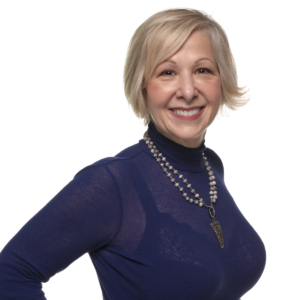On Our Radar – Why Female Vision is Critical at the Top
 By Melissa J. Anderson (New York City)
By Melissa J. Anderson (New York City)
Why do companies need women in leadership? According to a new book by Sally Helgesen, Writer and Leadership Development Consultant, and Julie Johnson, Executive Leadership Coach, women bring a different kind of vision to leadership than men. The book, The Female Vision: Women’s Real Power at Work, reveals that women are privileged to a “broad scale notice” style of leadership, while men display a more pointed focus.
While it may at first seem like a ’90s style Men are from Mars Women are from Venus approach to gender diversity, as Johnson pointed out yesterday at a National Council for Research on Women event, the book is based on neuroscience, examining the differences between male and female brains, as well as interviews and surveys with thousands of individuals.
Helgesen explained, “Women tend to focus in a broader way. Our attention operates like radar,” taking into account context and nuance. “Men display a laser-like focus on one thing,” she added.
Kerrie Peraino, Vice President of Human Resources and Chief Diversity Officer at American Express, opened the event, explaining Helgesen and Johnson “are onto something. This is cutting edge work.” Peraino said that Amex is working to position itself as a “gender intelligent organization.”
She explained that means playing to “the competitive advantage that is created when you bring both brains to work. Not only is it a nice thing to do, but really is about creating the competitive advantage.”
Depleted: Why Women Are Leaving the Workforce
According to Johnson, the idea for the book came to her in her work as an executive coach. “I was able to see a disturbing trend.”
She continued, “Women – who were highly educated… at an arms length of the corner office – leaving.” Publicly, she said women often state their reason for leaving their job is family related. But privately, “they were discouraged, depleted. They said, ‘it just wasn’t worth it.’”
Helgesen saw a link to her own previous work as well. Together, they undertook a wide range of qualitative and quantitative research. She said, “We recognized key differences in how women and men define satisfaction in the workplace.”
She continued, “Women tend to place a much higher value on work they perceive as intrinsically satisfying every day. Men are much more likely to perceive a job as satisfying based on salary or position. Women are much more likely to care about the quality of the day-to-day.”
Additionally, “Women are likely to place a higher value on what a job means for them now, rather than what it will mean for them down the road. This is not to say that women don’t care about salary levels.” Women are just also focused on contextual satisfaction, she added.
The authors explained that when women perceive that their work is not taken seriously or that they are not having an impact on their company, they feel blocked by the system, and leave.
How to Tap Into “Broad Scale Notice”
Following the initial discussion of the book, panelists Tracy High, Partner, Sullivan & Cromwell LLP; Anne Weisberg, Director, Talent, Deloitte L.P.; and Jorge Garcia, SVP, Diversity & Inclusion Enterprise Program Management Executive, Bank of America joined the stage for a discussion revolving largely around how the messages within the book can be put into practice in the real world. The discussion was moderated by Melinda Wolf, Head of Professional Development, Bloomberg L.P.
The panelists shared anecdotes about how to put broad scale notice into practice.
Weisberg commented on the need to involve men in the gender parity discussion – by showing the value of diverse patterns of thought. She recalled how an internal study of people in sales at Deloitte showed that men viewed women asking questions during a pitch as merely being indecisive, or lacking leadership qualifications. In fact, the women were displaying broad scale notice – trying to look at the pitch from different angles and gather more information.
Weisberg said that the study resulted in new training methodologies at Deloitte – and a program called “How to Sell to Women.”
Garcia said that at Bank of America, “for any professional trained at the firm, [for whom] we have invested years of development, to say ‘it’s not worth it,’ those are items that impact us. It hurts us.”
He continued, “One of our core values is to be an inclusive meritocracy.” That means having employees bring their “whole selves” to work, he explained. “We want to hire people for all the talents they can be. If they feel the need to suppress [their skills], they are diminishing their value.”
High recalled how, following the financial crisis, she heard many women in financial services saying they were skeptical of the system, or that they felt something was wrong… but when they tried to raise a question, they were simply told that “the numbers add up,” implying that intuitive or contextual views were not as valuable. She explained that the overprivileging of quantitative focus could have been a reason for the crash – and should have been balanced by a contextual, broad scale notice style of leadership.
Garcia added that his daughter is about to begin her career at a capital markets firm in New York – and said, “sending my one and only child into a capital markets firm, I hope doesn’t force her to lose her ability as a woman,” to look at things contextually.
High recalled a comment on CNBC’s Squawk Box earlier that morning, on the leadership style of Fortune’s Most Powerful Woman in Business Pepsico‘s CEO Indra Nooyi. Nooyi had described her leadership style as “leadership with purpose.”
She exclaimed, “The commentator said, ‘That’s BS.’ I almost fell off my treadmill. You can have a leadership style that is inclusive yet still direct. We need a voice to say that. It’s something we need to all take back to our organizations.”
Finally, Weisberg challenged the audience, “The next time you go to something like this, bring a male colleague with you. It’s an action step you can take. We have to involve the men.”






